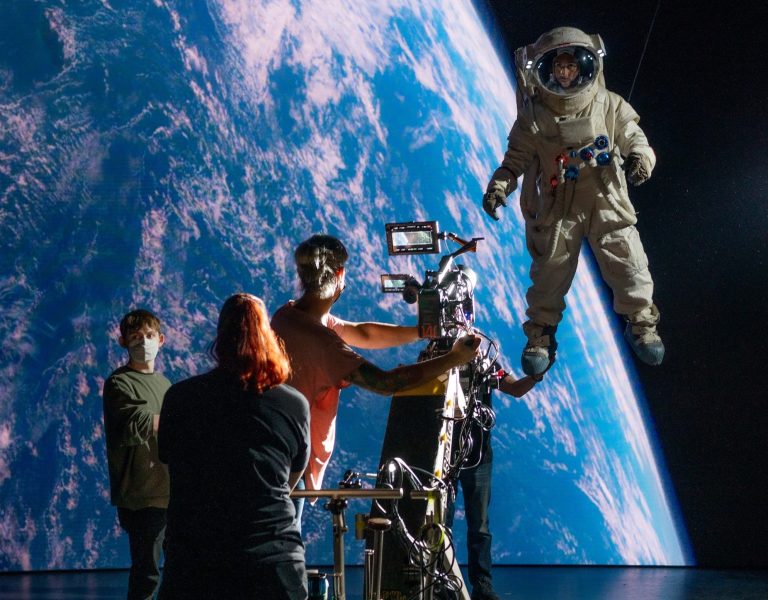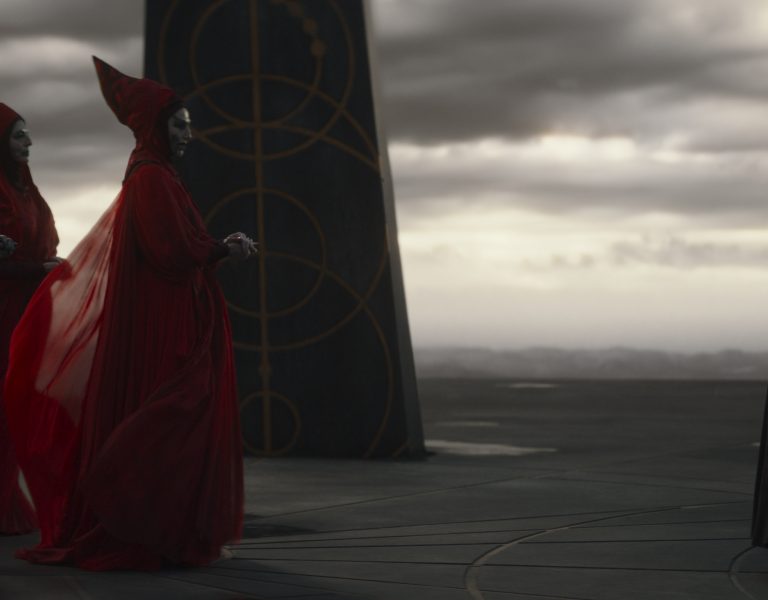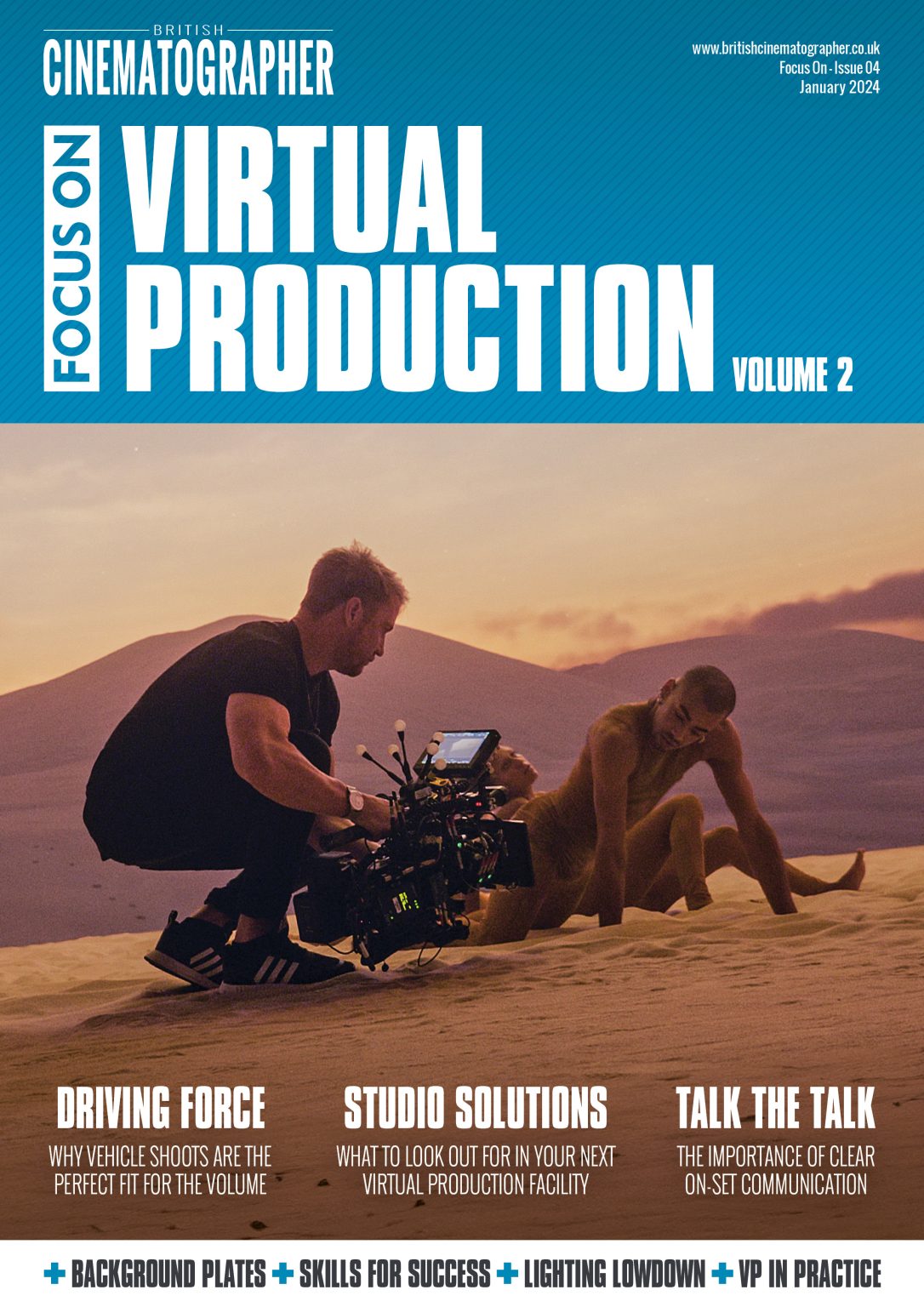The concept of image-based lighting on set is relatively new, but innovations and education pioneered by Quasar Science are bringing the technique to the mainstream.
The quest for realistic lighting that is emotive and immersive and that complements an actor’s physical attributes in an environment has been the goal since the first lighting technician flipped on the switch.
The list of tools employed by technicians to add vibrancy to lighting is enormous. Scrims, flags, nets, cucoloris, coloured gels, bounces, diffusion, dimmers, covered wagons, electronic flicker boxes…
Today the canvas is a volume wall. While the desire for accurate lighting remains the same, the tools and techniques to achieve it are remarkably different.
There are two schools of thought when lighting a VP environment: using the video wall itself and/or using traditional lighting fixtures. There are shortfalls to both and complexity in combination.
While volume walls have the potential to not only project the environment but also the lighting itself, the results have been less than ideal. LED panels typically use only RGB diodes, which work well for capturing still images but fall short when used to light actors. The limited, spikey spectrum of RGB diodes does not accurately render skin tones, fabrics, or colours, resulting in a less-than-satisfactory result.
Select newer LED panels are introducing white diodes into the spectrum but the most widely used walls only have RGB diodes. In essence, they are designed to be looked at, not to illuminate.
Traditional lighting fixtures, on the other hand, will deliver more accurate skin tones but doing so in a volume stage is complicated by having to synchronise with tracking systems that integrate camera movement with media played back on the wall from high powered computers.
In the past, we have used shortcuts like the “Poor Man’s Process”, the fire gag and manually creating shadows, limiting the ability of the filmmaker to make the lighting of the environment as visually convincing as possible.
Now, with image-based lighting (IBL) in virtual production, creating realistic and active subject lighting is as easy as playing back a video asset.

What is IBL?
IBL is a VFX technique where a 360-degree photo is mapped to the inside of a digital sphere to use real world lighting data to accurately light a scene. Light sources and all their interactions with the environment are captured in accurate detail, so that realistic lighting, with all its subtle nuances, is achieved.
The concept has been around for many years and successfully used in VFX for generating photoreal CG environments. The advent of virtual production and the need to integrate conventional lighting into the virtual environment has driven the need to adapt IBL for practical use on set.
Quasar Science has been pioneering this charge. Emma Gottlieb, technical sales manager, explains: “The first generation of virtual production, popularised by the success of Disney’s The Mandalorian, surrounded acting talent with video walls. As stunning as the results were on premium budget shows, for the majority of the production community these volumes proved to be prohibitively expensive. It also became apparent that the video panels themselves, designed as they were for out of home signage, do not emit the full spectrum of light required by artists to render realistic skin tones.”
Virtual production generation two has since emerged. These tend to be smaller LED walls in which the immersive environment is completed with image-based lighting.
“Not only are the on-screen results on par with, if not better than, those achieved on the highest-end volumes, but the cost to shoot is also dramatically reduced,” says Gottlieb. “The greater output allows dynamic lighting to have a stunning visual impact in-camera.”
Key to this advance has been R&D at Quasar Science, whose engineers spotted an opportunity to create highly pixelated, programmable, colour-correct LED fixtures.
“There are many fantastic fixtures out there but only for the colour space that the manufacturer has built into them,” says Gottlieb. “What we decided to do was to take the principles of traditional lighting fixtures and of video walls and combine them into one solution.”
The result is the Rainbow, a densely pixelated LED lighting fixture with which film lighting technicians can easily map transcoded media and emit full spectrum, colour accurate, environmentally specific light.
“IBL allows you to treat an array of Rainbow 2s or Double Rainbows as a low-resolution, high-output and fidelity monitor, playing back any asset in real time, perfect for pairing with LED volumes to correctly match any environment,” adds Gottlieb.
Quasar Science has gone further. It has cracked the code which enables any professional lighting source to be incorporated into an IBL scheme.
“You can put your entire Quasar ecosystem into Rec. 709 – the standard broadcast colour space which video walls and cameras can also read. All of a sudden, the wall, camera and lights are operating in the same colour space.”
This breakthrough enables lighting technicians to set the colour space of traditional fixtures to match that of the transcoded video played back on LED walls.
Today these colour spaces include Rec. 709, sRGB linear and sRGB curve alongside the native Quasar colour space RGBX. “We focused on these first because they are the colour spaces that LED panel manufacturers have designed into their walls,” explains Gottlieb.
Challenges of bringing IBL to market
There’s no escaping the fact that IBL is a complicated and advanced suite of technologies in which elements including media servers, video wall and console programming need to integrate seamlessly. What’s more, the global VP filmmaking community is still fairly small and experimental.
Recognising this, Quasar Science took the opportunity of the downtime enforced by the strikes to set up an educational programme of tutorials and demonstrations. Dozens of DPs, gaffers and lighting technicians learnt the theory and history of IBL, how it works and the creative benefits of the approach.
These took place in the US, where Quasar is based, and so successful was the feedback that the company plans to roll out a replica programme in the UK during 2024.
“Education and practical support have been key to building up everyone’s skillset, including our own,” says Gottlieb. “We are learning what people want to know, how people want to use the technology and how we can help them achieve their goals.”
It’s also why Quasar Science have partnered with integrators and specialists who understand every facet of the technology. Chief among these is Assimilate, developer of LiveFX, a pixel-mapping solution for video playback on LED walls.

Lightbulb moment
The biggest takeaway for cinematographers or gaffers is that none of this is hard as you might think it is.
“IBL is nowhere near as hard as it once was,” Gottlieb insists. “We have taught lighting technicians how to use IBL in 30 minutes. IBL is not new. It is a technology that is foundationally built on pre-existing lighting principles. We are just asking people to think about those principles in different ways. We’ve seen that once you get people in a room and explain it to them they get really excited about the potential.”
For producers, the stunning cost efficiency of IBL compared to the hundreds of thousands of dollars which can be spent on high-spec volume stages is too good to ignore.
And for creatives? Imagine what David Bowman’s flight through the galactic tunnel in 2001: A Space Odyssey might look like if shot today? With IBL, the toolbox is expanded dramatically. How creative technicians in the motion picture industry will use it, we are all excited to see. One cannot separate advances in lighting technology and conceptualisation from the emergence of IBL. It is the pinnacle of an industry’s century of effort.
–
Words: Adrian Pennington
This article is sponsored by Quasar Science





















